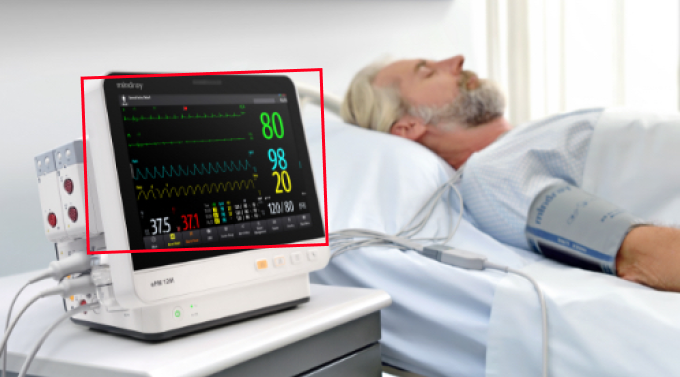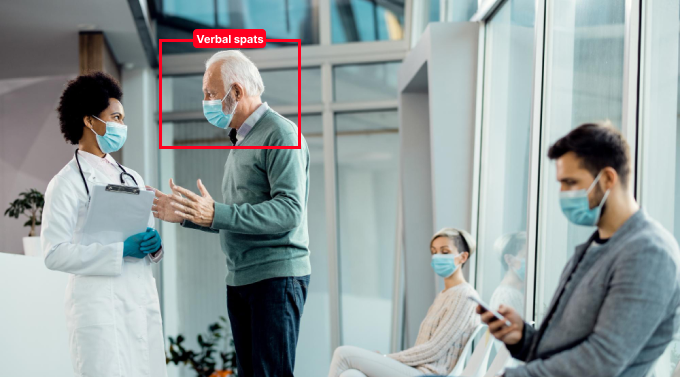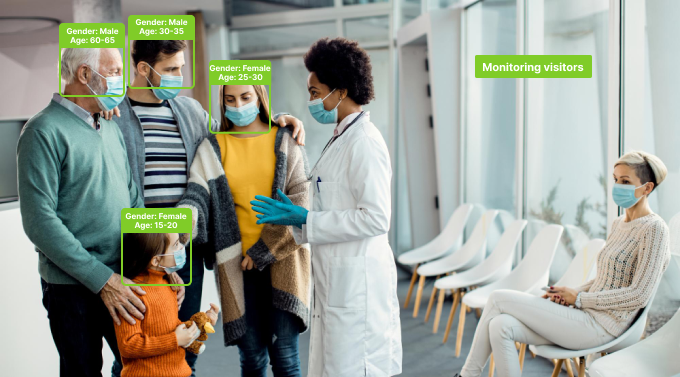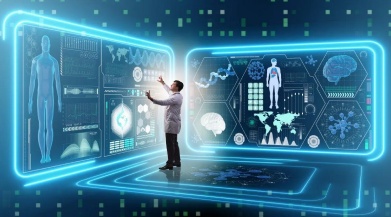In recent years, advancements in artificial intelligence (AI) have revolutionized various industries, including healthcare. One significant application of AI technology in healthcare settings is video analytics, which holds immense potential for improving hospital safety and security. Hospitals, being complex environments with numerous areas prone to security breaches and safety concerns, can benefit greatly from the implementation of AI-powered video analytics systems.
Here are the major ways AI video analytics can enhance hospital safety and security:
Real-time Threat Detection:
AI video analytics software can continuously monitor hospital premises in real-time, detecting potential threats or security breaches promptly. By employing machine learning algorithms, these systems can identify suspicious activities such as unauthorized access to restricted areas, individuals loitering in sensitive zones, or erratic behavior that may indicate a security threat. Real-time threat detection enables security personnel to respond swiftly, mitigating risks and ensuring the safety of patients, staff, and visitors.
Automated Monitoring of High-Risk Areas:
Hospitals encompass various high-risk areas, including emergency rooms, intensive care units, and medication storage facilities. AI video analytics can automate the monitoring of these critical zones, ensuring constant vigilance without the need for manual oversight. Through intelligent video surveillance, any anomalies or unusual activities within these areas can be promptly flagged, reducing the likelihood of theft, tampering, or unauthorized access to sensitive equipment and medications.
Patient Safety and Fall Prevention:

Patient safety is paramount in healthcare facilities, and AI video analytics can play a crucial role in enhancing it. By analyzing video feeds from patient rooms and common areas, AI systems can detect potential hazards such as spills, obstacles, or equipment malfunctions that may lead to patient falls or accidents. Additionally, these systems can alert staff in real-time when a patient is in distress or attempting to leave their designated area without assistance, enabling prompt intervention to prevent injuries.
Identification and Tracking of Individuals:

Hospital security often involves the identification and tracking of individuals, including patients, staff, and visitors. AI video analytics can facilitate this process by recognizing faces, identifying personnel badges, or tracking the movement of specific individuals throughout the facility. This capability not only helps in ensuring that only authorized individuals access restricted areas but also assists in locating missing patients or staff members in emergency situations.
Behavioral Analysis for Early Intervention:

AI-powered video analytics can analyze human behavior patterns to detect early signs of aggression, agitation, or distress among patients or visitors. By monitoring body language, facial expressions, and vocal cues, these systems can identify situations that may escalate into conflicts or violent incidents. Early intervention based on behavioral analysis enables hospital staff to de-escalate tense situations, prevent violence, and maintain a secure environment for everyone on the premises.
Integration with Access Control Systems:
Integration of AI video analytics with access control systems enhances overall security by ensuring that only authorized individuals gain entry to restricted areas within the hospital. By cross-referencing video footage with access control data, these systems can detect anomalies such as tailgating or unauthorized access attempts in real-time. Moreover, AI algorithms can adaptively adjust access permissions based on behavioral patterns and security protocols, further strengthening the facility's security posture.
Compliance Monitoring and Incident Investigation:
AI video analytics provides hospitals with a powerful tool for compliance monitoring and incident investigation. By recording and analyzing video footage, these systems enable hospitals to ensure compliance with regulatory requirements such as HIPAA (Health Insurance Portability and Accountability Act) and maintain comprehensive records of security incidents for review and analysis. Moreover, AI-powered video forensics capabilities facilitate post-incident investigations by quickly retrieving relevant footage and identifying contributing factors.
Predictive Analytics for Risk Mitigation:
Leveraging historical data and machine learning algorithms, AI video analytics can provide predictive insights to anticipate potential safety and security risks within the hospital environment. By analyzing past incidents, security trends, and environmental factors, these systems can identify areas of vulnerability and proactively implement measures to mitigate risks. Whether it's predicting equipment failures, anticipating overcrowding in certain areas, or forecasting potential security threats, predictive analytics empower hospitals to take preemptive actions to safeguard patients, staff, and assets.
Conclusion:
AI video analytics represents a transformative technology with the potential to significantly enhance hospital safety and security. By enabling real-time threat detection, automating monitoring of high-risk areas, ensuring patient safety, identifying and tracking individuals, analyzing behavior for early intervention, integrating with access control systems, facilitating compliance monitoring, and offering predictive insights, AI video analytics systems empower hospitals to create safer environments for patients, staff, and visitors alike. As the technology continues to evolve, its role in safeguarding healthcare facilities will become increasingly indispensable, paving the way for a more secure and resilient healthcare infrastructure.


No comments yet